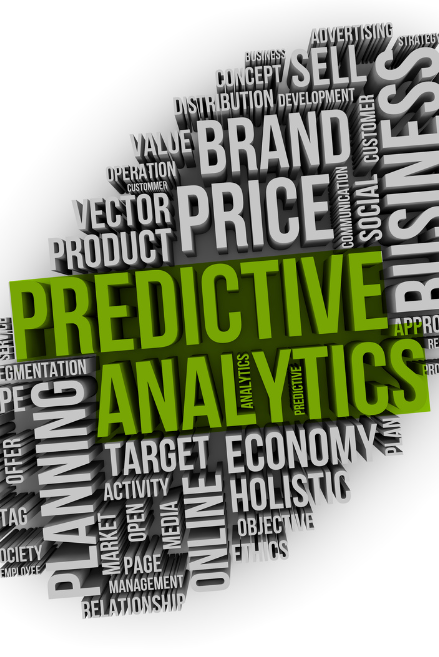
Predictive Analytics for Social Media Marketing: Advanced Strategies and Implementation
Predictive analytics for social media marketing empowers businesses to forecast customer behavior, optimize content strategies, and maximize engagement by leveraging historical data, machine learning algorithms, and advanced statistical models to make data-driven decisions that significantly improve social media ROI and campaign performance.

Understanding Predictive Analytics in Social Media Context
Predictive analytics transforms social media marketing from reactive to proactive by analyzing patterns in user behavior, engagement metrics, and content performance to forecast future outcomes. This approach enables marketers to anticipate trends, identify optimal posting times, predict viral content potential, and allocate resources more effectively across social platforms. Digital marketing transformation through predictive analytics represents a fundamental shift toward data-driven decision-making that eliminates guesswork and enables more strategic, results-oriented social media campaigns that deliver measurable business value.
Core Predictive Analytics Components:
- Historical data analysis and pattern recognition
- Machine learning algorithms for behavior prediction
- Statistical modeling for trend forecasting
- Real-time data processing and analysis
- Automated decision-making systems
- Performance prediction and optimization models
Data Collection and Preparation Strategies
Effective predictive analytics begins with comprehensive data collection from multiple social media platforms, customer touchpoints, and external data sources. This process involves gathering engagement metrics, demographic information, behavioral patterns, content performance data, and contextual factors that influence social media success. Data quality and consistency are crucial for accurate predictions and reliable insights.
Essential Data Sources for Social Media Prediction:
- Platform Analytics: Native insights from Facebook, Instagram, Twitter, LinkedIn, and TikTok
- Engagement Metrics: Likes, shares, comments, saves, and click-through rates
- Audience Demographics: Age, location, interests, and behavioral characteristics
- Content Performance: Post types, formats, timing, and creative elements
- External Factors: Seasonal trends, industry events, and competitive activities
- Customer Journey Data: Cross-platform interactions and conversion paths
Audience Behavior Prediction Models
Predictive models for audience behavior enable marketers to anticipate user actions, preferences, and engagement patterns before they occur. These models analyze historical interaction data to identify trends, seasonal patterns, and behavioral triggers that influence social media engagement. Understanding these patterns allows for more targeted content creation and strategic campaign timing.
Behavior Prediction Implementation Steps:
- Collect comprehensive user interaction data across all social platforms
- Segment audiences based on behavioral patterns and engagement levels
- Apply machine learning algorithms to identify predictive patterns
- Develop scoring models for engagement probability and content preferences
- Create automated triggers for personalized content delivery
- Continuously validate and refine prediction accuracy
Content Performance Forecasting
Content performance prediction helps marketers identify which posts, formats, and topics are most likely to succeed before publication. This involves analyzing historical content performance, identifying successful patterns, and applying predictive models to forecast engagement levels, reach potential, and conversion likelihood. Advanced attribution modeling techniques complement content forecasting by providing deeper insights into how social media content contributes to overall marketing objectives and business outcomes.
Content Prediction Factors:
- Visual elements and creative design patterns
- Caption length, tone, and messaging style
- Hashtag usage and trending topic alignment
- Post timing and frequency optimization
- Platform-specific format preferences
- Seasonal and contextual relevance factors
Optimal Timing and Frequency Prediction
Predictive analytics enables precise timing optimization by analyzing when target audiences are most active, engaged, and likely to interact with content. This goes beyond general best practices to provide personalized timing recommendations based on specific audience segments, content types, and business objectives. Frequency prediction helps avoid audience fatigue while maximizing exposure and engagement opportunities.
Timing Optimization Metrics:
- Audience online activity patterns and peak engagement times
- Platform-specific optimal posting windows
- Content type performance variations by time and day
- Competitive posting analysis and gap identification
- Seasonal and event-based timing adjustments
- Cross-platform coordination and sequencing strategies
Influencer Performance and ROI Prediction
Predictive analytics transforms influencer marketing by forecasting campaign performance, identifying high-potential partnerships, and optimizing influencer selection based on audience alignment and engagement predictions. This approach reduces risks associated with influencer investments while maximizing campaign effectiveness and return on investment.
Influencer Prediction Framework:
- Audience Analysis: Evaluate follower quality, engagement rates, and demographic alignment
- Performance History: Analyze past campaign results and content effectiveness
- Engagement Prediction: Forecast likely interaction levels and reach potential
- Brand Fit Assessment: Predict audience receptivity to brand partnerships
- ROI Modeling: Estimate conversion potential and campaign value
Crisis Prevention and Reputation Management
Predictive analytics enables proactive reputation management by identifying potential issues before they escalate into full-scale crises. This involves monitoring sentiment trends, detecting unusual activity patterns, and predicting the likelihood of negative events based on historical data and current conditions. Early warning systems allow for rapid response and damage mitigation.
Crisis Prediction Indicators:
- Sentiment analysis trends and negative sentiment spikes
- Unusual engagement patterns and activity anomalies
- Competitor crisis spillover potential
- Industry trend analysis and risk assessment
- Historical crisis pattern recognition
- Real-time monitoring and alert systems
Campaign Performance Optimization
Predictive models enable real-time campaign optimization by forecasting performance outcomes and recommending adjustments before campaigns conclude. This dynamic approach allows marketers to maximize results by reallocating budgets, adjusting targeting parameters, and modifying creative elements based on predicted performance trends.
Optimization Strategies:
- Real-time performance monitoring and prediction updates
- Automated budget reallocation based on predicted ROI
- Dynamic creative optimization and A/B testing
- Audience segment performance prediction and adjustment
- Cross-platform campaign coordination and optimization
Technology Stack and Tool Selection
Implementing predictive analytics requires selecting appropriate technology platforms that can handle data processing, model development, and real-time analysis. This involves evaluating various analytics tools, machine learning platforms, and social media management systems based on business needs, technical capabilities, and integration requirements.
Essential Technology Components:
- Data integration platforms for multi-source data collection
- Machine learning frameworks for model development
- Real-time analytics engines for immediate insights
- Visualization tools for data interpretation and reporting
- Automation platforms for action implementation
- API integrations for seamless data flow
Measuring Predictive Analytics Success
Success measurement for predictive analytics involves tracking both prediction accuracy and business impact metrics. This includes evaluating model performance, measuring improvement in key performance indicators, and assessing the overall return on investment from predictive analytics implementation. Regular assessment ensures continuous improvement and optimization of predictive capabilities.
Key Performance Indicators:
- Prediction Accuracy: Model precision and reliability metrics
- Engagement Improvement: Increases in likes, shares, comments, and interactions
- Reach Optimization: Enhanced audience reach and impression efficiency
- Conversion Enhancement: Improved click-through rates and conversion metrics
- Cost Efficiency: Reduced cost per engagement and improved ROI
- Time Savings: Automation benefits and operational efficiency gains
Future Trends and Advanced Applications
The future of predictive analytics in social media marketing includes advanced AI capabilities, real-time personalization, cross-platform integration, and enhanced privacy-compliant prediction methods. These developments will enable more sophisticated forecasting, automated decision-making, and personalized customer experiences that drive superior marketing results.
Conclusion
Predictive analytics for social media marketing represents a transformative approach that enables data-driven decision-making, proactive strategy development, and optimized campaign performance across all social platforms. By implementing comprehensive predictive analytics frameworks, businesses can anticipate customer behavior, optimize content strategies, and maximize social media ROI through intelligent forecasting and automated optimization. Success requires strategic planning, appropriate technology selection, and continuous refinement of predictive models based on performance feedback and evolving market conditions. Advanced analytics platforms continue evolving to support sophisticated predictive modeling capabilities, providing marketers with increasingly powerful tools to forecast social media success and optimize their strategies for maximum impact in today’s competitive digital landscape.
Key Takeaway: Predictive analytics transforms social media marketing from reactive to proactive by leveraging data-driven insights to forecast performance, optimize content strategies, and maximize engagement through intelligent prediction models and automated optimization systems.


